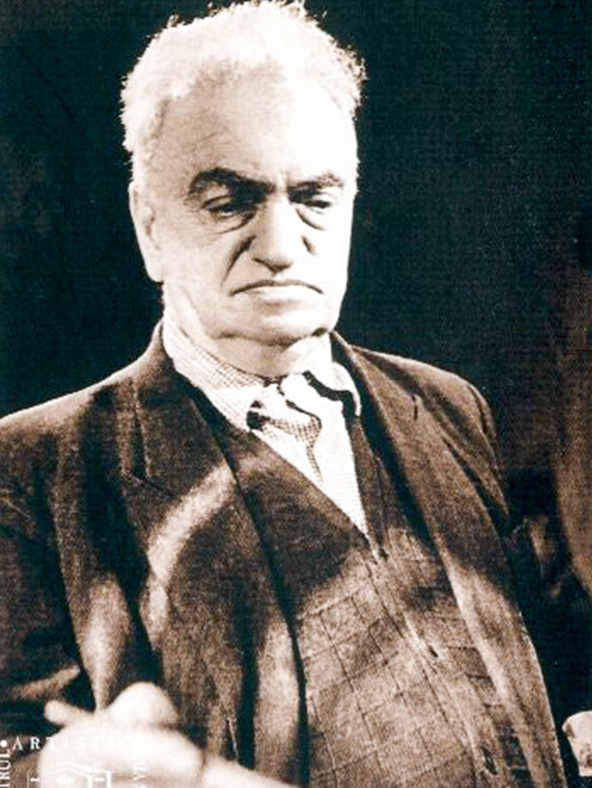Ziffer Sándor

Eger, Hungary, 1880 – Baia Mare, 1962
The Life
From Hungary to Baia Mare, Paris, Berlin, Hamburg, Munich, and Baia Mare again. He searched everywhere for new means of expression in painting and in the end he found it in his inspiring mining city.
The Art
Ziffer’s great merit is that although he was a particularly traditionalist Baia Mare artist, he was modern and innovative at the same time. His spirituality, nourished by domestic soil, expanded into a universally European one. He was able to reconcile the modern picturesque trends of the turn of the century with the plein air traditions of Baia Mare. His strong decorative paintings with definite contours and powerful colors are indisputable among others.
The child Ziffer turning to the arts as solace
Ziffer Sándor was born in Eger on May 3, 1880, but he was just a few years old when the family moved to Újpest, Hungary. His father, Ziffer Ede was a teacher. His mother died early on, so the boy was raised by his father’s second wife, who treated him as a real stepmother would. He was an extremely intelligent child, who by the age of five already completed the first grade of elementary school. He also played a prominent role in the school choir. However, at the age of seven, he became ill with scarlet fever and childhood paralysis. He was rescued after major surgeries, but he lost his hearing almost completely and one of his legs remained shorter. So his interest toward the fine arts is also compelled by these physical constraints. At the age of nine, he was taken to Vienna for aftercare and while there, he spent days at the Hofmuseum and the Belvedere. He began to draw, making copies of famous works.
The foundation of his artistic character has been chiseled while studying at the School of Applied Arts in Budapest, then in 1900, two months before graduating, he left and went to the Munich Academy to become an art historian. Here he studied with Hans-Joachim Raupp and later on attended Anton Ažbe's school.
Discovering the wonders of expressionism and post-impressionism
From 1904 be became Hollósy Simon’s enthusiastic student and devotee. He visited Baia Mare for the first time in 1906, but he settled there on a permanent basis only in 1918. While being here, he followed the style of mentor Simon Hollósy and was a prominent part of the second generation of the Baia Mare artists’ colony.
He was having great fights with himself because of the many styles he interacted with. In the decorative and painting department of the School of Applied Arts in Budapest, he studied the use of stronger and pure colors, the vigorous decorative forms and strictly graphic drawing, then in Munich with Hollósy he studied the lyrical, landscape-bound realistic art style. All this was associated with Ziffer's robust personality and unbridled temperament.
He also made several trips to Paris and Berlin, where he encountered forms of painting that further impacted his works and technique. He mastered the forms of post-impressionist, expressionist, and cubist style trends. From 1908 to 1911, he was a member of the MIÉNK artist group led by Szinyei Merse Pál.
Finding his artistic individuality
In the spring of 1907, Ziffer returned to Baia Mare, from where he and his comrades, mocked as "the neos" came to represent the new trend, the art based on the art of Postimpressionism, on the works of Cezanne, Van Gogh, Gauguin, which were also greatly influenced by the Art Nouveau and Fauvism. The next seven years in Ziffer’s life represent the unearthing of his artistic individuality.
At this time, the city of Baia Mare had already captivated the artist in such a way, that he could live and work there for more than fifty years, and the city was always able to provide a constant theme and inspiration for his art. He has immortalized countless times the more or less characteristic subjects of the city, apparently taking pleasure in his knowledge of the familiar sight, and at the same time in the playful, peculiar variability of nature, the changing light, the composition and the perspective.
In 1910, the thirty-year-old artist married Käthe Beckhaust, a painter from Berlin. Later on he had big plans of opening a school in Munich, but that plan failed with the outbreak of the First World War.
Settling in Baia Mare and passing the knowledge to the next generation
In 1918 he settled permanently in Baia Mare and during the next decades his work was featured in several exhibitions in Budapest and Cluj-Napoca. His pedagogical work also falls on this period: in 1926, at the request of Thorma János, he strarted teaching at the Free Art School of Baia Mare, from 1932 the taught left-wing students who were removed from the School of Fine Arts in Cluj on the instructions of state security, and from 1935 he took up a teaching position at the school.
Ziffer has been the mentor of many Hungarian and Romanian painters, including János Karácsony and Lídia Agricola
István Borghida, who wrote his monograph, explains that Expressionism is the last significant era in Ziffer’s work, dating back to the second half of the 1930s. This is the time when the already legendary “zifferian” cold blues and greens and their pulsating complementary contrasts appear in constructively raised compositions. He finds a masterful solution on how to enhance the shades of oxide greens, cool cobalts, ultramarines and purples swirling side by side into a “cold glow”. He further enhances the tension of his compositions with its cutouts. In the later stage of his Expressionism, the enhancement of the representation of space into a spatial sensation will also become part of his technique
After the Second World War, most of the Hungarian artists who remained in Baia Mare lived at an extreme level of poverty. So even Sándor Ziffer found it difficult to gain social recognition. In 1945, after the death of his wife, he continued painting day after day, although he was over sixty-five years old. He suffered a serious car accident in 1949, with consequences which limited his movement, and this is why from there on, his subjects were painted from inside his studio. He died in Baia Mare in 1962 and was laid to rest in the Baia Mare (formerly Reformed) cemetery

